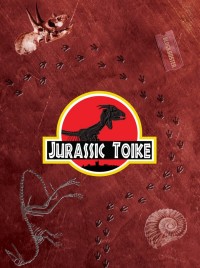A recent archaeological dig at the University of Toronto’s St. George campus has brought to light startling new evidence that has historians awe-struck. “This could completely revolu- tionize the current long-held theories of how student govern- ment functioned at the uni- versity,” one excited historian declared.
Yes, you read that correctly – archaeologists have uncovered evidence suggesting that the University of Toronto Students’ Union had, at one point in time, provided a useful service to the university’s students.
“It’s really very exciting,” says Dr. L. D’Azbals, the lead ar- chaeologist at the site. “We’ve long assumed that the UTSU al- ways existed solely to fatten the wallets and resumes of washed- up students who weren’t ready to leave school and find a real job. To find out that they were actually relevant is astonish- ing.” Prior to this discovery, little was known regarding the UTSU and its involvement in student life.
The organisation ostensibly promotes “fostering intellectual growth and moral awareness”, “open, democratic decision- making”, ‘“enhancing the student experience”’, and a few other things which we at the Toike lack sufficiently heavy quotations for. With the excep- tion of the UTSU’s supposed involvement in decisions to allow undergrads access to Robarts and women access to Hart House, there is little concrete evidence of their adherence to any their own principles.
This inadequacy is why archaeologists were so stunned to have made this incredible find. The artifacts themselves are decidedly unimpressive – an old schoolbag held together with a pin, and a scattering of old notes from an algebra class. However, the pin that performed such a heroic and vital task for this student, which is speculated to have been a common accessory at the time, is far more interesting upon closer examination, as it appears to be from a past event that was run by the UTSU.
Indeed, archaeologists have concluded that if not for the UTSU, this student would most assuredly have had to purchase a new schoolbag using money that they would have preferred to spend drowning their sorrows in alcohol. Given this information, it would not be a stretch to say that the UTSU did indeed change this student’s life for the better.
After months of lab work and rigorous testing, the team of archaeologists has carbon- dated the pin to a time they are referring to as “the good ol’ days”. This was reportedly a time when gender roles were strictly enforced and the Toike Oike reported on actual events. When asked why they didn’t just read the date off of the ar- tifact itself (where it was clearly and prominently displayed), the team replied that they “really wanted to use the new mass spectrometer”.



